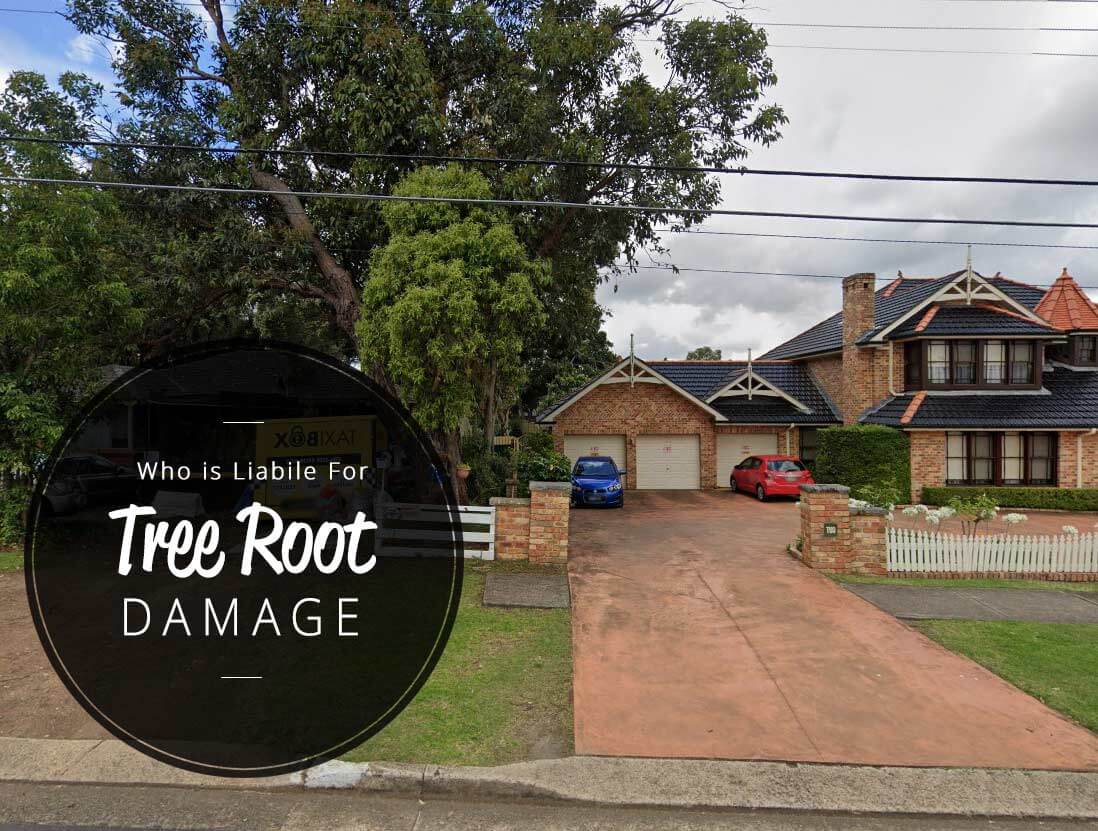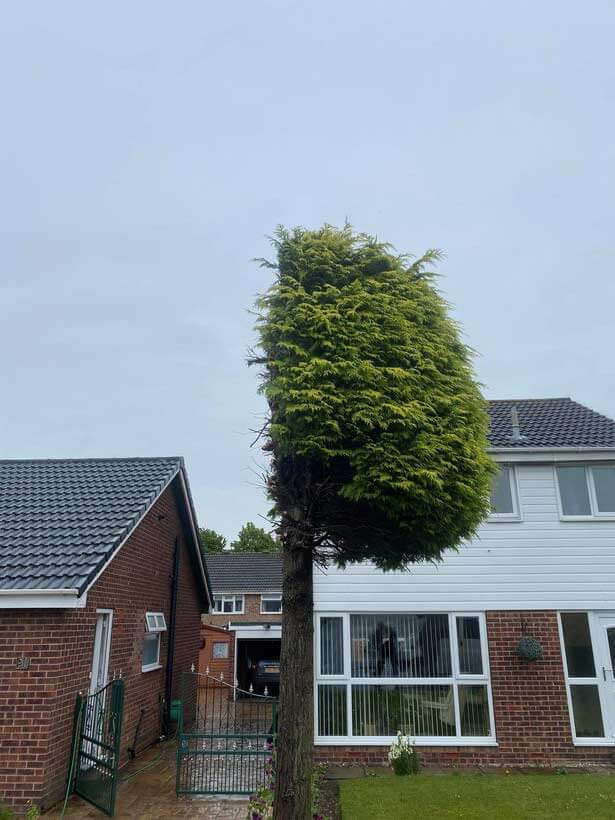Roots from a large tree can, in time, damage fences, driveways, paving, and even the foundations of your home if left unchecked.
If a neighbor’s tree roots are in your yard and damaging your property, you are liable for trimming the roots to fix the problem. You cannot force your neighbor to pay for the removal of the tree, nor can you go into their yard to cut the tree roots causing damage.
There are several things you need to consider before trimming the roots of a tree, including the tree’s structural stability and overall health of the tree. The best practice is to hire an arborist to carry out root pruning.

Can I cut tree roots on my property?
If a tree’s roots are on your property, you can cut them, but you should be careful not to kill a tree.
The tree’s owner is responsible for its reasonable care; this duty grants them benefits like enjoying its fruit and taking anyone who destroys the tree to court.
While we’re on the topic of tree owners, what rules apply to trees that lie on the property line? This type of tree is a boundary tree; all property owners own the tree and share the relevant rights, liabilities, and responsibilities.
Cutting roots from a boundary tree would also require you to consult your co-owner.
Is my neighbor liable for compensating me for damage caused by their tree’s roots?
As you settle a tree dispute, the options available vary from state to state. Below are four laws used by different jurisdictions to determine liability over tree roots where damage was caused:
Massachusetts law
The property owner suffering the encroachment cannot sue or compel their neighbors to stop their tree’s roots from being a nuisance. Their only legal recourse is self-help, i.e., reasonably taking independent steps to remove the encroaching tree roots.
This simple law has been criticized for tying landowners’ hands as far as getting compensation for the structural damages caused.
Jurisdictions that have adopted this rule include:
- The District of Columbia
- Florida
- Maryland
- Kentucky
- Massachusetts
Restatement rule
This rule distinguishes between artificial and naturally occurring vegetation to assign accountability for encroaching branches and roots.
If your neighbor planted the tree and it requires their effort for its survival, this rule requires them to reimburse you for any serious harm done by its roots. If the tree is indigenous to the area, those on whose land it sits don’t legally owe you anything.
Determining what trees were planted, when, and by whom can be challenging, so few jurisdictions use the Restatement rule to settle tree disputes between two or more people. However, Connecticut is one state that partially relies on it.
Virginia rule
Open for interpretation, this rule maintains that trees that are not noxious and cause no “serious injury” give the aggrieved party only one legal option–self-help.
The Virginia rule fails to clarify the scope of “noxious” and “serious injury,” provoking even Virginia to abandon it for more precise guidelines.
Hawaii rule
The Hawaii rule fills some gaps in the ones above by:
- Defining vegetation meriting legal action as those which “cause actual damage or pose an imminent danger of actual harm to the adjoining property.”
- Outlining the liability neighbors bear for the danger. “The damaged or imminently endangered neighbor may require the tree owner to pay for the damages and cut back the endangering branches or roots. If such is not done within a reasonable time, the damaged or imminently endangered neighbor may cause the cutback to be done at the tree owner’s expense.”
The clarity provided by this law has helped it find favor in numerous jurisdictions, including:
- Oklahoma
- Hawaii
- Ohio
- Illinois
- New York
- Minnesota
- New Mexico
- Kansas
- Indiana
Considerations before the DIY approach
While the law in many states empowers you to take matters into your own hands when tree roots intrude on your property, you should take care not to invite legal repercussions from them over destroying such a tree.
Below are some necessary preliminary steps to take before cutting off the trespassing roots:
Reach out to a property lawyer in your region
Legal practitioners are the best source of information about local ordinances as you attempt to deal with the invading roots.
They would also be able to find out if the state owns the tree, an essential piece of information as it is illegal to interfere with state trees without prior notice and permits.
Consult a certified arborist
They will help determine what tree roots are causing the damage–your neighbor’s or those from an unsuspecting tree that’s feet away.
The University of Florida found that cutting roots more than one inch in diameter would likely spell death for a healthy tree; an arborist can tell whether the tree abides by this finding.
Notify the tree owner
Backed by the professional advice you’ve gathered, assure your neighbor that trimming the encroaching roots is your legal right and will not destroy their tree.
Your neighbor may even offer to split the cost of the root-trimming services or allow you additional freedom as you exercise the self-help principle.
Document the process before, during, and after tree trimming
You may qualify for compensation from your insurance company. Notes and photographs detailing the roots’ position, the damage they inflicted on your property, and the estimates of repair costs would strengthen your claim.
Keep the pruning to your side of the fence
You aren’t allowed to cross over to your neighbor’s side (except when they give express permission) as you cut the intruding roots or tree branches. Nor are you permitted to snip any roots or branches on their side. Removing or harming the tree could cost you up to thrice the tree’s monetary value, a penalty applicable in most states.
If in doubt of the boundary line’s location, ask your neighbor. And if you’re not the most gifted with a chainsaw, you may be better served by hiring a professional arborist.




